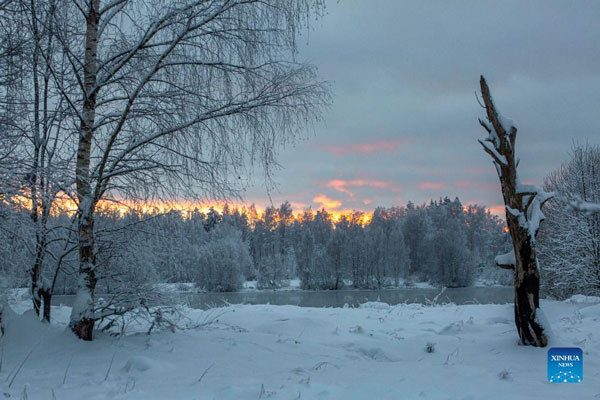
Rome, Italy | Xinhua | As winter approaches, European countries have been taking steps to soften the blow from an insufficient supply of Russian natural gas to the continent. Analysts say this year’s energy crunch may have impacts lasting for years.
When gas supplies from Russia started to dwindle earlier this year, European countries set a goal of filling natural gas storage facilities to at least 80 percent of capacity by Nov. 1, the traditional start of the winter months. Latest data show countries have surpassed that level, topping 90 percent in early October and adding to that since then.
Analysts say reduced natural gas use — due to a combination of conservation efforts and unusually warm weather in the weeks leading up to the Nov. 1 deadline — has helped add to storage levels.
Massimo Nicolazzi, a senior advisor for the Energy Security Program with the Italian Institute for International Political Studies (ISPI), noted that gas use in Europe was 25 percent lower in October than it was in the same month last year.
But while high storage levels may help avoid rolling blackouts and rationing as some had feared, that does not mean the biggest obstacles have been surpassed.
Inflation in the 19-member eurozone is expected to climb to a record high of 10.7 percent in October, a figure driven largely by higher energy prices, according to a flash estimate from Eurostat on Monday.
Nicolazzi said that natural gas in Europe is mostly used by families, energy production and industries, and the countries are taking different steps to curb its use, whether through policies related to energy storage, joint purchases, or price caps.
Antony Froggatt, deputy director and senior research fellow with the Environment and Society Program at Chatham House in London, also said government moves to confront the energy crisis in Europe have been a “mixed bag.”
Higher energy prices have resulted in increased efficiency and public support for developing renewable energy. A rush to replace Russian gas has forced the governments to make investments in gas liquefaction plants and find alternate sources for natural gas, Froggatt said.
However, he also pointed out that the amount of money governments have earmarked so far in reducing the impacts of surging energy prices — at least 500 billion euros (494 billion U.S. dollars) — will mean there will be less money available for incentivizing cleaner energy sources.
“It seems that for some policymakers, assuring energy security trumps protecting the environment and confronting climate change,” Froggatt told Xinhua.
Nicolazzi told Xinhua that renewable energy policy was not likely to improve amid the current energy crisis, though perhaps execution will. The European Union (EU)’s “Fit for 55” initiative agreed to last year called on EU member states to reduce net greenhouse gas emissions by 55 percent from 1990 levels by 2030, largely by shifting the generation of energy from traditional fossil fuel sources like gas, petroleum, and coal to renewables.
“The ‘Fit for 55’ program can’t realistically be more ambitious than it is, but it can help create more incentives for governments to take stronger steps to meet those targets,” Nicolazzi said.
Froggatt noted that seeing changes in the continent’s energy culture will take time.
“European markets were accustomed to receiving gas supply from Russia for a long period, and it will take time for new plans and political support to lead to fruition,” he said. “Getting through the challenges of this winter is just a start.” ■
 The Independent Uganda: You get the Truth we Pay the Price
The Independent Uganda: You get the Truth we Pay the Price



